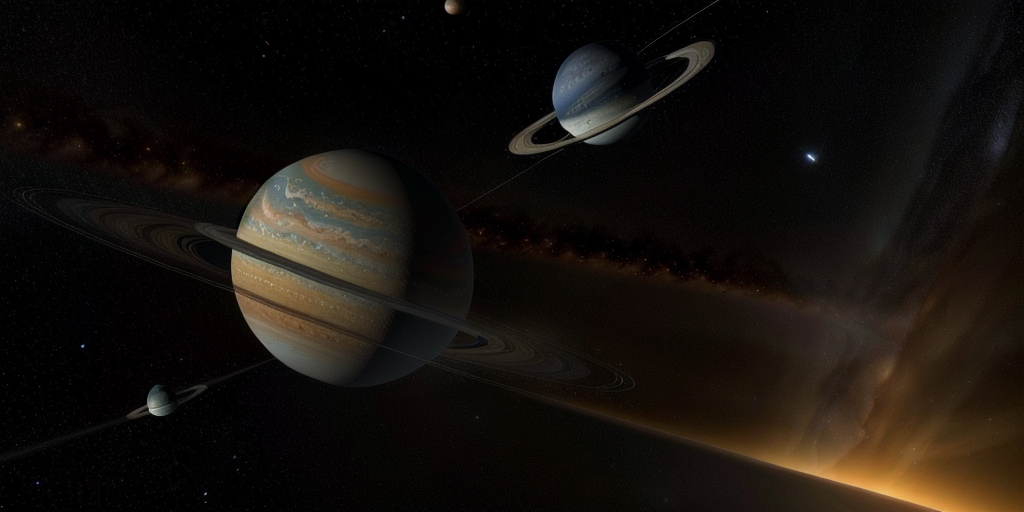
NASA’s Voyager 1 has just found a 50,000 Celsius ‘wall of fire’ at the edge of the solar system
How did your country report this? Share your view in the comments.
Diverging Reports Breakdown
NASA’s Voyager 1 has just found a 50,000 Celsius ‘wall of fire’ at the edge of the solar system
The Voyager probes we sent from Earth back in the 70s found an incredible ‘wall of fire’ at the edge of our solar system where temperatures could reach up to 50,000 degrees Celsius. If humanity is ever going to make it to other solar systems, then we need to be able to know we can safely get out of ours without being burned to a crisp. The Voyager probes also contains something called a ‘golden record’, a disk which is supposed to let any aliens who discover Voyager at some point to learn what humanity is about. On the disk is data containing pictures of species on Earth, greetings from the UN Secretary General and US President at the time of the launch as well as the ‘Sounds of Earth’ on tracks containing animal noises, babies crying, the sounds of nature and a selection of music. There’s plenty of space for objects to pass through without getting incinerated, so we’re not permanently trapped within our own solar system.
If humanity is ever going to make it to other solar systems, then we need to be able to know we can safely get out of ours without being burned to a crisp.
Should we fancy living on another planet, we might want to try terraforming nearby rocks such as Mars, but that’s going to be a long and expensive process that we don’t yet have the technology for.
Meanwhile, trying to get out of our own solar system is an incredibly long trek that would take decades, time the crew of any ship heading for some other solar system and other planet doesn’t really have.
Advert
Another obstacle to contend with is what’s out at the furthest reaches of the system we call home, and that’s where the Voyager probes can help.
Voyager 1 depicted moving beyond the planets of our solar system (Space Frontiers/Getty Images)
The Voyager probes
Voyager 1 is a NASA probe launched in 1977 as part of a mission to explore the furthest reaches of our solar system.
It was launched just a few days after its twin probe, Voyager 2, was launched and together they have been boldly going where no man-made object has gone before.
Advert
Voyager 1 is actually the man-made object most distant from our planet.
The probes also contains something called a ‘golden record’, a disk which is supposed to let any aliens who discover Voyager at some point to learn what humanity is about.
On the disk is data containing pictures of species on Earth, greetings from the UN Secretary General and US President at the time of the launch as well as the ‘Sounds of Earth’.
That includes tracks containing animal noises, babies crying, the sounds of nature and a selection of music.
An artistic depiction of the heliosphere and its boundaries (NASA)
What did Voyager find?
According to IFL Science, the Voyager probes found that once they reached the edge of the solar system, the detectable temperature was between ‘30,000-50,000 kelvin’.
Advert
That’s pretty much the same in Celsius, give or take 273.15 degrees.
Both probes were able to pass through this incredibly hot area safely as the extremely high temperature in this ‘wall of fire’ was coming from high energy particles that were unlikely to strike the Voyager probes.
So parts of this thing are incredibly hot, but much of the rest of it is as cold as the rest of space.
There’s plenty of space for objects to pass through without getting incinerated, so we’re not permanently trapped within our own solar system by a wall of cosmic flames that would incinerate anyone trying to pull a Star Trek.
What is this ‘wall of fire’?
First things first, it’s not actually a wall of fire, it’s really more like the furthest boundary of our solar system where solar winds from our sun and the interstellar wind from outside our system meet.
Advert
As NASA puts it: “The Sun sends out a constant flow of charged particles called the solar wind, which ultimately travels past all the planets to some three times the distance to Pluto before being impeded by the interstellar medium.
“This forms a giant bubble around the Sun and its planets, known as the heliosphere. The boundary between solar wind and interstellar wind is the heliopause, where the pressure of the two winds are in balance. This balance in pressure causes the solar wind to turn back and flow down the tail of the heliosphere.
“As the heliosphere plows through interstellar space, a bow shock forms, similar to what forms as a ship plowing through the ocean.”
While this ‘giant bubble’ might be the furthest barrier we could claim our solar system reached it plays a vital role in keeping out interstellar radiation so what’s beyond our solar system doesn’t mess us up.
Source: https://www.ladbible.com/news/science/nasa-voyager-wall-fire-solar-system-873254-20250623
